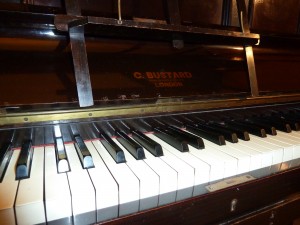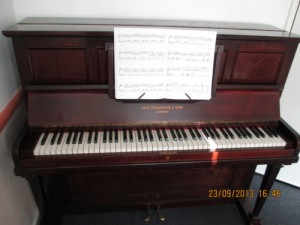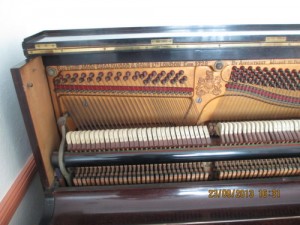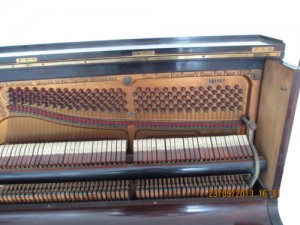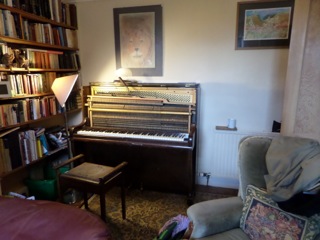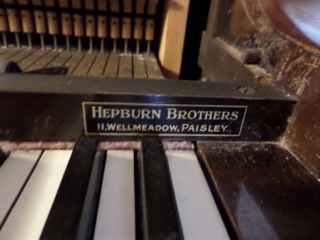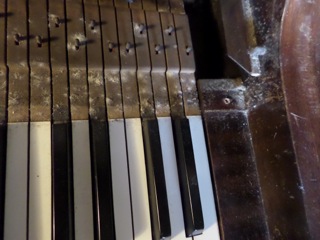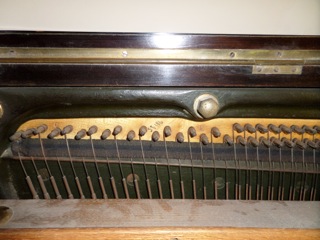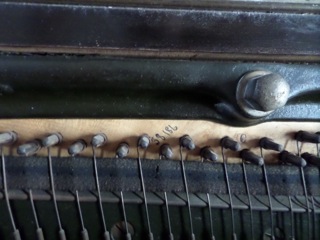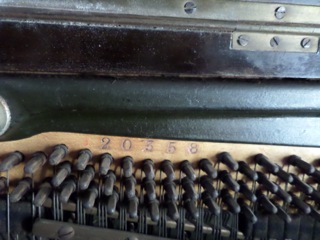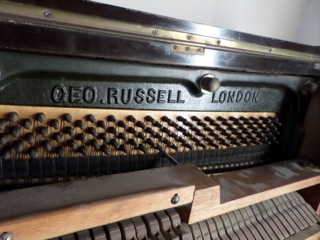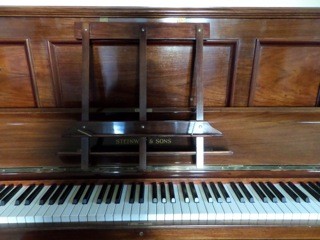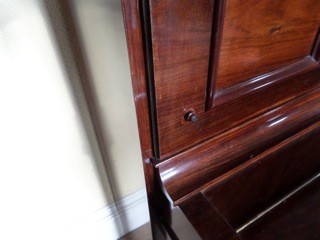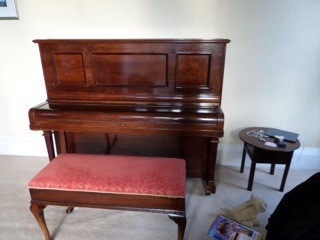Thursday, Oct. 3rd Edinburgh Corstophine Rd.
Robin Foster got this C. Bustard upright #5032 free on Gumtree. From the looks it’s about 1915. Last tuned 9 years ago by a lily-livered tuner who neglected to bring it up from a full tone low; my cup of tea precisely. I started at about 10:00, by about noon the piano was up to 441 and totally playable.
I used the Steve Franklin (Oakland Calif. +1.510.536-TUNE) method: wrench the temperament up to about 447hz, tune down to the bass – when you get to the wound strings tune very sharp. Tune to the E an octave above the temperament, sharping the octaves more and more ’til they beat several times per second, then STOP and start again from the top note (A in the case of this 85-note piano), tuning it by playing the last tuned A above the temperament with the damper pedal on then tuning the highest A very sharp. Work your way all the way back down to the E above the temperament. Go less sharp as you approach the tenor. I call it backwards tuning. Far more stable than the traditional technique.
I miscalculated the bass, which sunk to unplayability, so retuned that in five minutes. The treble also sank to 1/4 tone or more flat, so I spent half an hour tuning again above the temperament section. Amazing success. A very good upright up to concert pitch from a tone low for £55 plus tip.
Robin will publicise my offer of free tunings in the Highland and Islands (as long as I can sleep under the piano) because he hails from there.
plan: retune within 3 months – or earlier if piano party planned, at which time I will fix the two broken two jacks and one jack spring in the treble. I’ll also try to address a dozen dead bass string singles (see my post re: fixing bass strings).
